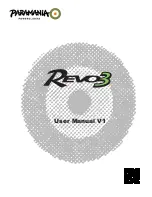
BE2c
36
7/8”
Page
8
Copyright©
2007
‐
11
M.K.
Bengtson
All
Rights
Reserved
Rev
07/11
bending
to
conform
to
the
rounding
shape
of
the
formers,
soaking
with
wet
paper
towel
for
20
‐
30mins
will
help.
Rear
‘sides’
curved
to
follow
formers,
card
template
for
top
sheet
ready
to
go.
The
top
sheeting
for
this
model
was
done
in
two
pieces,
forward
and
aft
of
the
last
F4
former.
Use
card
to
make
templates
for
cutting
the
1/16”
balsa
sheeting.
Start
with
a
piece
about
1“
wide
and
longer
than
you
need.
Bend
it
into
position
between
the
carbane
struts,
mark
the
position
of
the
struts,
remove
and
cut
strut
notches.
Test
fit
the
notches
and
mark
the
length
required,
leaving
some
over
at
the
front.
Make
the
rear
template
by
tapering
to
the
width
required
at
F7.
When
the
templates
are
complete,
lay
over
1/16”
balsa
sheet
and
carefully
cut
to
shape.
Once
again
soaking
the
balsa
shapes
under
a
wet
paper
towel
will
make
it
sufficiently
flexible.
Laying
the
balsa
over
a
suitable
round
shape
(e.g.
a
spray
paint
can)
as
it’s
soaking
with
the
paper
towel
on
top
will
help
even
more.
Prepare
the
former
tops
and
fuse
sides
with
glue
and
install
the
top
sheets
holding
it
all
down
with
plenty
of
masking
tape.
The
top
sheet
should
be
overhanging
the
sides
by
a
1/16”
or
so
on
either
side
and
more
around
the
aft
cockpit.
Sand
smooth
when
the
glue
has
completely
dried.
Top
sheeting
done
and
cockpits
marked
Next
mark
the
position
and
shape
for
the
cockpit
cut
outs.
A
technique
for
getting
symmetrical
shapes
is
to
start
with
card,
cut
a
rectangle
bigger
than
you
need.
Lay
over
the
fuse
and
mark
the
length
you
need
to
have
crossways
to
get
the
lowest
points
of
the
cut
outs
in
the
correct
position
on
the
fuse
side.
The
width
of
the
rectangle
is
the
fore/aft
dimension
of
the
cut
‐
out
measured
from
the
plans.
Fold
the
card
rectangle
in
half
such
that
the
fold
is
the
centreline
of
the
fuse.
Transfer
the
cockpit
shape
shown
on
the
side
view
plan
to
one
side
of
your
template.
Cut
the
template,
both
sides
at
once,
to
this
shape.
Open
out
the
template
and
align
the
fold
line
with
the
centreline
of
the
fuse,
positioning
fore
and
aft
as
per
plan.
Mark
around
the
outside
of
the
template
with
pencil.
Put
a
new
blade
in
your
knife
and
with
light
pressure
follow
the
pencilled
line.
Two
or
three
passes
with
the
blade
should
see
a
neat
cut
out.
Too
much
pressure
will
‘break’
the
balsa,
too
little
and
it’ll
just
take
another
pass,
but
you’ll
get
a
neat
cut.
1
st
stringer and F11
Stringer
rear
decking
Fit
and
glue
piece
F11
in
position
between
the
upper
longerons.
Cut
the
1/8”
x
1/16”
centre
stringer
to
length,
glue
either
end
to
F11
and
F7.
Using
this
as
your
guide
assemble
the
other
upper
deck
formers
between
F11
and
F7
ensuring
the
formers
are
vertical.
Install
the
rest
of
1/8”
x
1/16”
stringers,
a
pair
of
tweezers
will
help
positioning
the
outboard
strings
which
require
more
twist
between
forms
F10
and
F11.
The
cut
outs
in
the
former
tops
that
separate
the
stringers
are
extremely
fragile,
especially
in
parts
F10
and
F11,
use
as
much
care
as
you
can,
when
you
break
off
a
piece
(oh!
you
will
☺
)
,
reattach
with
CA
as
you
assemble
the
stringer
to
maintain
the
spacing
between
the
stringers.

























